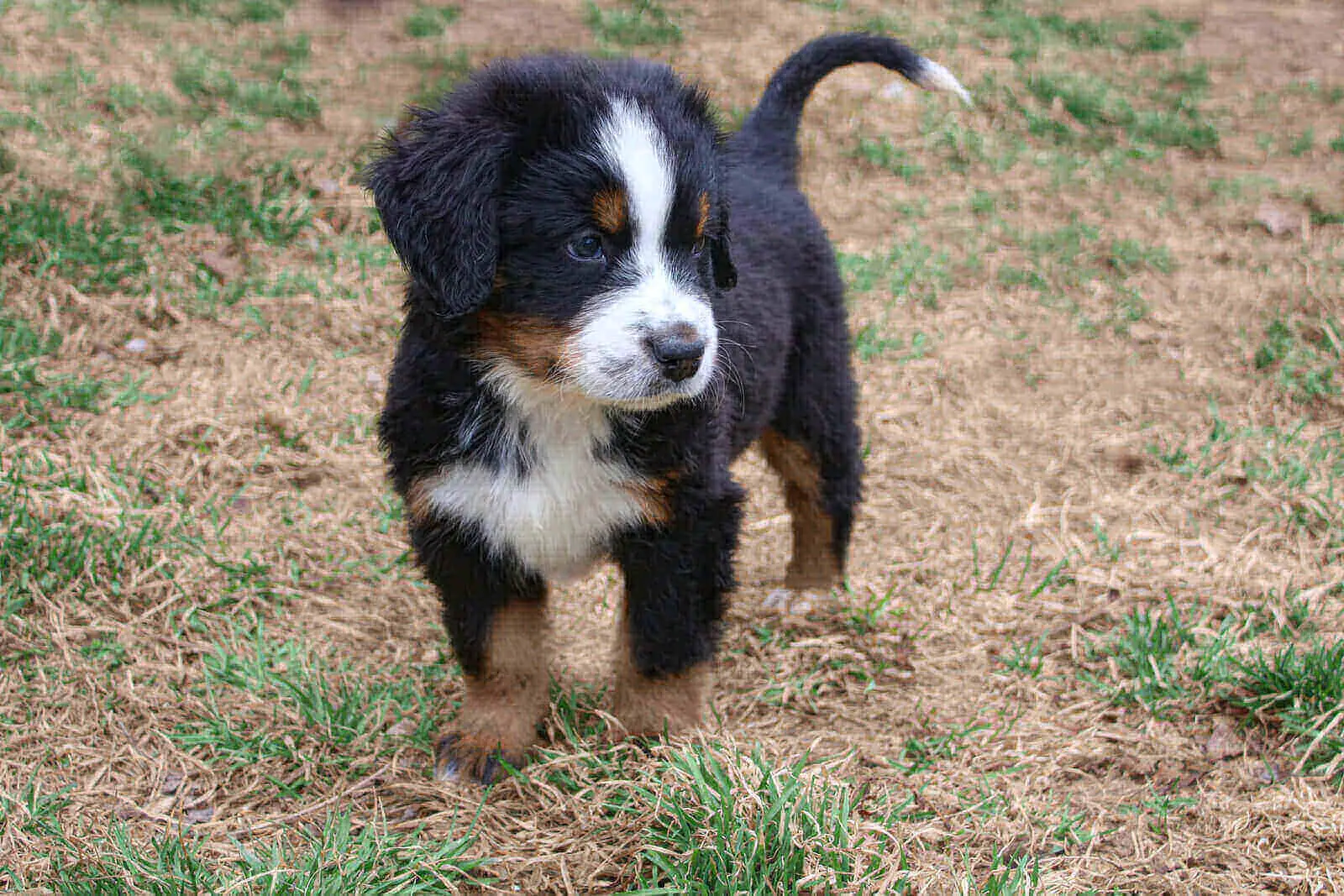One of the most fascinating things about Havanese dogs is their ability to change their colors. In this article, you will find information on how, why and when Havanese dogs change their colors.
Havanese color change takes place due to the dogs’ genes. Havanese dogs have ‘modifying genes’ which make it possible for the dogs’ colors to lighten or darken. The color changes are usually gradual but often quite dramatic. The color changes may start at 3 to 6 weeks, and usually continue until the dog is 2 to 3 years old.

What Color Are Havanese Dogs?
Before launching into a discussion on the Havanese color change phenomenon, it is important for us to know what colors these dogs usually come in.
Havanese dogs come in a wide array of colors. There are white, black and chocolate brown Havanese dogs. There are also red, fawn, cream, silver and even blue Havanese dogs.
So wide is the range of colors that people sometimes talk of there being Havanese colors of the rainbow. This is on account of the fact that many of the colors of the rainbow are part of the Havanese dogs’ color range.
Some of these colors are rarer than others. Among the rare Havanese colors is chocolate brown. This color is caused by a recessive gene: hence its relative rarity.
Is It Normal For Havanese To Change Color?
Yes, Havanese color changes are normal.
Therefore if you notice some Havanese skin color change (or Havanese fur color change), you should know that this is a normal phenomenon for the dog.
While viewing a Havanese puppy, it is hard to tell what color it will end up with at adulthood.
In fact, it can be even hard to tell what color it will be three months down the road. That is because Havanese puppy color change happens quite fast.
Of course, it is important to clarify that when we talk about the Havanese dog color change, it is not something akin to chameleon color change.
It is not a situation where the dog will be white in the morning and black in the evening. Rather, it is something that normally happens in a gradual but still dramatic manner.
Why Do Havanese Dogs Change Color?
Havanese color change is due to the dog’s genes. In Havanese dogs, there are genes that are referred to as ‘modifying’ genes. It is these that make the color changes possible.
The modifier genes in Havanese dogs can, at times, cause the dog’s color to darken. They can, at other times, make the dog’s color to lighten.
Therefore the Havanese coat color change is on account of these genes.
It is important to appreciate that in Havanese dogs, there are 10 genes controlling the color. Among these are the modifying genes in question: which may cause the dog’s color to lighten or darken over time.
How Do Havanese Change Color?
Havanese color change is usually gradual. It can take place over the period of weeks or months. When the dog sheds its hair, the new hair that comes in has a different color.
Eventually then, the dog’s whole coat color changes.
Sometimes, when you look at photos for Havanese color change before and after, you can’t believe that you are seeing the same dog.
That is because the Havanese color change can be quite dramatic: as evinced by Havanese color change photos.
For instance, you may have a Sable Havanese color change where the dog darkens to a point where it is almost solid black.
Or you may have a Havanese sable color change where the dog lightens to a point where it is almost silver!
Therefore the red sable Havanese color change can go in either direction: lightening or darkening.
That also applies with chocolate Havanese dogs. You can have a chocolate Havanese color change that darkens or lightens the dog dramatically.
It is not just the coat’s color that changes. Even the nose and eyes may change color too.
Thus, a brindle Havanese color change may result in the dog becoming lighter – almost silver in color.
Besides the main Havanese hair color change, there may also be a simultaneous Havanese nose color change. In the end, a dog that had blue eyes may end up with brown eyes at another point.
With regard to the nose, you can have a chocolate and white Havanese color change in which the dog’s nose also changes: from black to brown.

Do Havanese Puppies Change Color?
Havanese color change mostly happens when the dogs are puppies. Therefore the answer is ‘yes’, Havanese puppies do change color.
The color changes may start when the dogs are 3 to 6 weeks old, and continue until the dogs are 2 to 3 years old.
This is why it can be hard to pick Havanese dogs on the basis of color preferences. With most other dogs, you know that if the puppy is of a given color, it will grow into an adult dog of that color too.
But with Havanese dogs, and given that the Havanese puppies do change their color, that can be difficult. A Havanese puppy can be of a given color, but then grown into an adult Havanese dog of a very different color.
Do Havanese Adult Dogs Change Color?
Whereas Havanese color change starts when the dogs are puppies, it continues right into their adulthood.
Havanese color change age range is from 3-6 weeks, right up to the time the dog is 2 to 3 years old.
The age of adulthood for Havanese dogs is 1 year. Yet at 1 year of age – when they are adults – the color changes are continuing.
Even beyond the age of 3 years, we do have some Havanese dog owners who report color changes much later in the dogs’ lives.
Therefore the fact that your Havanese dog is more than 3 years old only reduces the probability of it changing color again. But it doesn’t completely eliminate the possibility of the dog changing color some time later.
What Age Do Havanese Change Color?
Havanese color change typically starts when the puppies are 3 to 6 weeks old. It continues until the dogs are 2 to 3 years old. But some Havanese dogs do still change their color even much later in their lives.
Which Havanese Colors Change The Most?
Brown, silver and red are some of the Havanese colors that tend to change the most.
Others are chocolate and Sable.
Cream Havanese color change is also quite common, and sometimes rather drastic.
Which Havanese Colors Change The Least
Solid white and solid black Havanese colors tend to change the least.
It is possible for you to get a solid white Havanese puppy which then maintains that color throughout its life.
Similarly, it is possible for you to get a solid black Havanese puppy, which maintains its solid black color throughout its life.
Therefore black and white Havanese color change is not as common as that for other colors.
For that reason, if you want a Havanese dog for which the probability of color change is lower, it is best to go for a solid white or solid black one.
Final Thoughts – Havanese Color Change
Havanese dogs do change their colors from time to time. This is because in these dogs, there are modifying genes, on account of which the dogs’ colors may lighten or darken over time.

Normally, Havanese dogs’ color changes start when they are 3 to 6 weeks old. Then they continue, right up to the time when the dogs are 2 to 3 years old. But even older Havanese dogs may change color at some points.
As a pet lover, make sure to learn about pet more and give your pet dog a good and comfortable life!

Welcome to Learn About Pet. My name is Rajkumar Ravichandran and I love all pets, travel, and amazing food. I write about my passion and personal experience caring for multiple pets in this blog! ❤️
Post Disclaimer
DISCLAIMER: THIS BLOG OR WEBSITE, "Learn About Pet", DOES NOT PROVIDE YOU WITH MEDICAL ADVICE AND IS NOT A SUBSTITUTE FOR MEDICAL ADVICE. ALWAYS GET IN TOUCH WITH YOUR PERSONAL VETERINARIAN AND USE INFORMATION HERE AS GENERAL ADVICE.
The information, including but not limited to, text, graphics, images and other material contained on this website are for informational purposes only. No material on this site is intended to be a substitute for professional veterinary advice, food recommendation, diagnosis, or treatment. Always seek the advice of your veterinarian or other qualified health care provider with any questions you may have regarding a medical condition or for pet food related questions.







